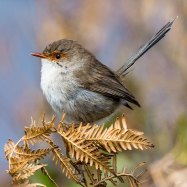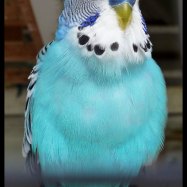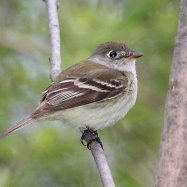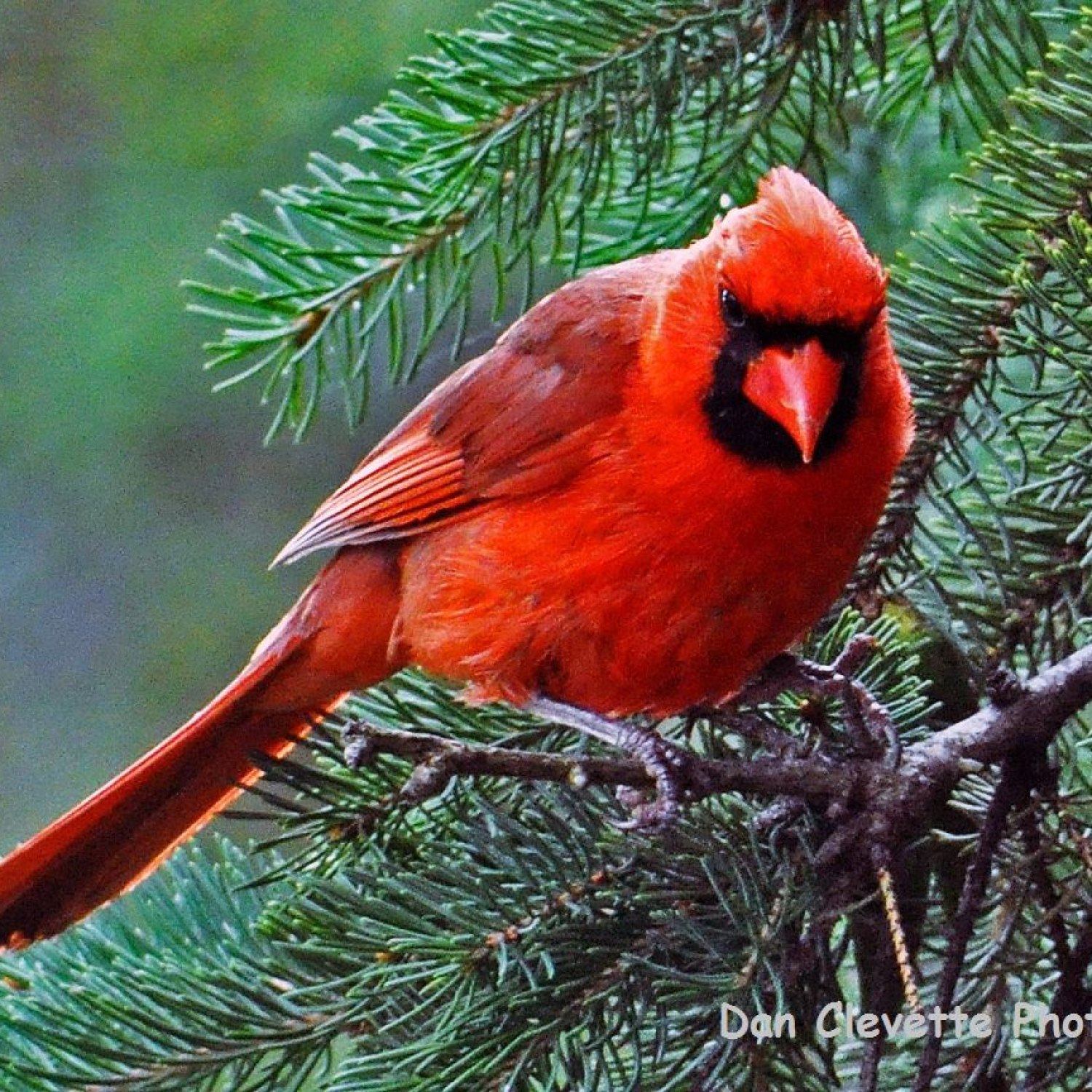
Cardinal
8.3 to 9.3 inches
The cardinal, a medium-sized songbird with a strong beak, is a sight to behold with its vibrant red plumage. Found in the eastern and central parts of North America, this bird belongs to the Cardinalidae family. Standing at 8.3 to 9.3 inches, it is commonly known as the 'redbird.' Keep an eye out for these colorful creatures in your backyard! #cardinal #birdwatching #naturelovers
Animal Details Summary:
Common Name: Northern Cardinal
Kingdom: Animalia
Habitat: Woodlands, gardens, and parks
The Beautiful and Bold Northern Cardinal: A Songbird of North America
Have you ever walked through a woodland or a park during the early morning hours and heard the melodious song of a bird, only to look up and see a flash of bright red among the leaves? If so, then you have likely encountered the stunning Northern Cardinal, also known as Cardinalis cardinalis. This beautiful songbird, with its vibrant coloring and bold personality, has captured the hearts of birdwatchers and nature enthusiasts alike. In this article, we will dive deep into the unique characteristics of this beloved bird, from its scientific classification to its habitat, feeding habits, and more.Classification and Distribution
The Northern Cardinal belongs to the Animalia kingdom, which comprises all living organisms Cardinal. It is further classified as a member of the Chordata phylum, which includes animals with a spinal cord. The cardinal also falls under the class Aves, which encompasses all birds, and the order Passeriformes, which consists of perching songbirds. Interestingly, the Northern Cardinal is the official state bird of seven US states, making it a significant symbol of North America.The Northern Cardinal is widely distributed throughout North America, with its natural habitat spanning across the United States, Canada, and Mexico. Its range primarily covers the eastern and central parts of North America, including the forests, woodlands, gardens, and parks in these regions. This bird has also adapted well to human-made habitats, such as suburban backyards, making it a common sight in many residential areas.
Distinctive Features
The Northern Cardinal is recognizable for its striking and distinct appearance. The males are a bright, vibrant red, with a black mask on their face and a crest on their head. The females, on the other hand, are a pale brown color with red highlights on their wings, tail, and crest Chicken. This difference in coloring between the males and females is known as sexual dimorphism and is common among many species of birds.In addition to its unique coloring, the Northern Cardinal has a medium-sized body, measuring between 8.3 and 9.3 inches in length, with a weight of 1.5 to 1.8 ounces. It also has a strong beak, perfectly designed for its feeding method, which we will explore next.
Feeding Habits
One of the defining characteristics of the Northern Cardinal is its feeding method. This songbird is primarily a seed-eater, with a diet consisting of various seeds and grains such as sunflower, thistle, and safflower seeds. It also feeds on fruits and insects, making it an omnivorous bird. Interestingly, the Northern Cardinal has a unique way of cracking open seeds using its powerful beak. It grasps the seed with its beak and cracks it open using a sideways motion, allowing it to access the nutritious kernel inside.The Northern Cardinal is also known as a ground forager, meaning it searches for food on the ground rather than in trees. This behavior is particularly noticeable during the colder months when birds, including the cardinal, cannot rely on insects and instead focus on foraging for seeds and grains on the ground.
Behavior and Mating
The Northern Cardinal is known for its bold and confident personality. It is often seen perched on branches, fences, or bird feeders, with its head held high, surveying its surroundings. This behavior is known as cardinal posturing and is a display of aggression towards other birds, particularly males. Male cardinals are highly territorial and spend a significant amount of time defending their territories.During the spring and summer months, male cardinals use their bright red plumage and distinctive songs to attract mates. Once a mate is chosen, the pair will build a nest together, usually in a dense bush or tree, using twigs, grass, and leaves. Female cardinals typically lay 3 to 4 eggs, which are incubated by both parents for around two weeks. After the eggs hatch, the male and female take turns caring for the chicks, bringing them food and protecting them from predators. The young cardinals will leave the nest after about nine days and become independent after four to five weeks.
Conservation Status and Threats
The Northern Cardinal is not currently listed as a species of concern by the International Union for Conservation of Nature (IUCN). It is a common and widespread species throughout its range, with a stable population. However, like many bird species, the Northern Cardinal faces various threats to its survival, such as habitat loss, climate change, and collisions with buildings and windows. As urbanization continues to expand, the Northern Cardinal's natural habitat is increasingly fragmented, making it challenging for them to find suitable nesting and foraging areas.To mitigate these threats, organizations such as the Audubon Society and the National Wildlife Federation are working to protect and preserve the habitats of the Northern Cardinal and other bird species. By promoting sustainable urban development and raising awareness about the importance of conservation, we can help ensure the survival of these beautiful creatures.
The Northern Cardinal and its Relationship with Humans
The Northern Cardinal has a longstanding and unique relationship with humans. Its beautiful coloring and enchanting songs have made it a beloved bird for birdwatchers and nature enthusiasts. Many people also enjoy having cardinals visit their backyard bird feeders, adding a touch of vibrant color to their daily lives.Moreover, the Northern Cardinal has cultural significance in many Native American communities, where it is considered a symbol of vitality, blood, and spirit. It has also been featured in literature and art, with its striking appearance and bold personality making it a popular subject for artists and writers.
The Power of Nature's Diversity
The Northern Cardinal is a prime example of the incredible diversity found in nature. From its bold and vibrant coloring to its unique feeding habits and behaviors, this songbird stands out among other bird species. Its presence in our daily lives not only adds beauty to the world but also serves as a reminder of the delicate balance of ecosystems and the importance of preserving nature's diversity.In conclusion, the Northern Cardinal, with its scientific name cardinalis cardinalis, is a truly remarkable creature. This medium-sized songbird, found in the woodlands, gardens, and parks of North America, has captured the hearts of many with its vibrant coloring, distinctive songs, and bold personality. As we continue to learn more about these beautiful birds, we must also remember to protect and preserve their habitats for future generations to enjoy.

Cardinal
Animal Details Cardinal - Scientific Name: Cardinalis cardinalis
- Category: Animals C
- Scientific Name: Cardinalis cardinalis
- Common Name: Northern Cardinal
- Kingdom: Animalia
- Phylum: Chordata
- Class: Aves
- Order: Passeriformes
- Family: Cardinalidae
- Habitat: Woodlands, gardens, and parks
- Feeding Method: Seed-eater
- Geographical Distribution: North America
- Country of Origin: United States, Canada, Mexico
- Location: Eastern and central parts of North America
- Animal Coloration: Bright red with a black mask on the face and a crest on the head; females are pale brown with red highlights
- Body Shape: Medium-sized songbird with a strong beak
- Length: 8.3 to 9.3 inches
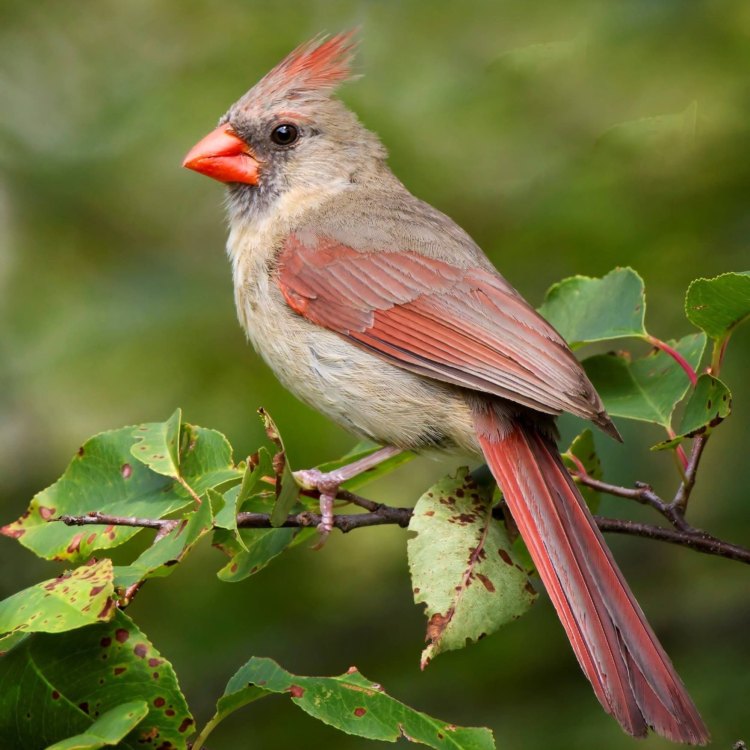
Northern Cardinal
- Adult Size: Medium-sized
- Average Lifespan: 3 years
- Reproduction: Monogamous
- Reproductive Behavior: Males court females with songs and offerings of food
- Sound or Call: Clear, loud, and musical song
- Migration Pattern: Mostly non-migratory, some populations may migrate short distances
- Social Groups: Pairs or small groups
- Behavior: Territorial and often aggressive towards other birds
- Threats: Habitat loss, predation, collisions with windows
- Conservation Status: Least Concern
- Impact on Ecosystem: Important seed dispersers
- Human Use: Popular backyard bird and state bird of several U.S. states
- Distinctive Features: Bright red plumage and prominent crest on the head
- Interesting Facts: Male cardinals feed their female partners during courtship and incubation.
- Predator: Birds of prey, snakes, and domestic cats
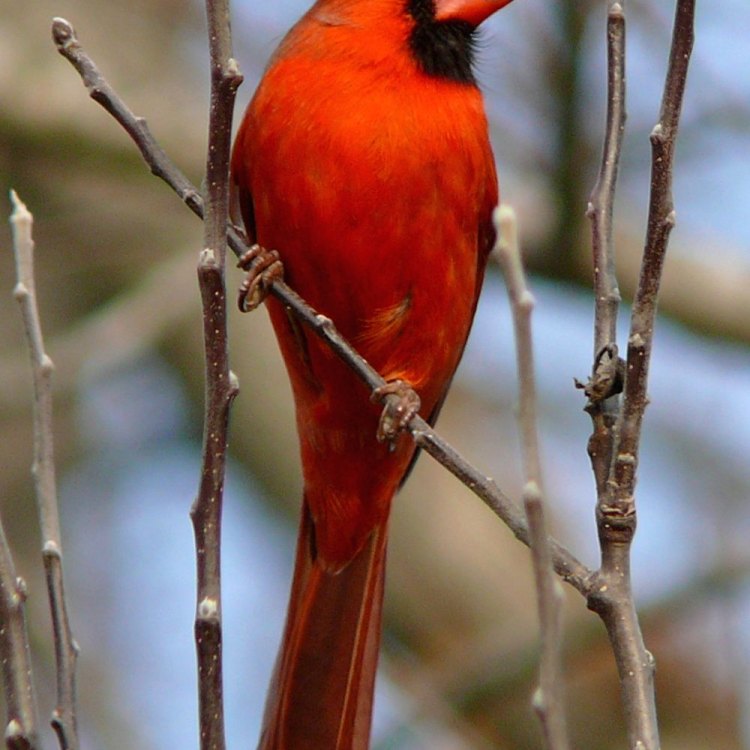
Cardinalis cardinalis
The Colorful and Courteous Cardinal: A Symbol of Resilience and Romance
The cardinal, with its striking red plumage and distinctive crest, is a beloved backyard bird in many parts of the United States. It is also the state bird of seven U.S. states, including North Carolina, West Virginia, and Ohio PeaceOfAnimals.Com. But beyond its popularity among bird watchers and state symbols, the cardinal also plays an important role in the ecosystem and has unique behaviors that make it stand out among other birds.Adult cardinals are medium-sized birds, reaching an average length of 8-9 inches and weighing around 1.5-1.8 ounces. They have a wingspan of 11-13 inches, making them agile flyers who can quickly dart between branches and shrubs. These beautiful birds have an average lifespan of three years in the wild, but can live up to 15 years in captivity.
One of the most interesting aspects of cardinal behavior is their reproductive behavior. These birds are monogamous, meaning they mate with only one partner for life. In the spring, males will begin to court females with their beautiful songs and offerings of food Cuckoo. The males will often bring seeds or insects to their females as a way of showing their love and dedication. Once a pair has formed, they will work together to build a nest and raise their young.
Cardinal songs are clear, loud, and musical, with a distinctive whistle that is easily recognizable. They are known for their ability to sing almost all year-round, even in the winter months. These songs are not only used for mating, but also for territorial defense. Male cardinals will fiercely defend their territory and their mates from other birds, often engaging in aggressive behaviors such as chasing and attacking intruders.
Cardinals are mostly non-migratory birds, meaning they do not migrate long distances like other bird species. However, some populations may travel short distances during the winter in search of food and shelter. They are generally found in pairs or small groups, and will often roost together at night.
In terms of their social behavior, cardinal pairs are very close and often show affection towards one another. Males will often feed their female partners during courtship and incubation, a gesture that is not commonly seen among other bird species. This shows the strong bond and partnership between male and female cardinals.
Unfortunately, these brightly-colored birds face numerous threats in their survival. One of the biggest threats to their existence is habitat loss. Urbanization and deforestation have significantly reduced the cardinal's natural habitat, leaving them with less space to forage and nest. They are also at risk of predation from birds of prey, snakes, and domestic cats. Collisions with windows, especially during their fast flights, is also a leading cause of death for cardinals.
Despite these threats, cardinals are currently listed as a species of "Least Concern" on the IUCN Red List, thanks to their large and stable populations. However, continual conservation efforts are necessary to ensure their survival in the face of ongoing habitat destruction and other threats.
In addition to their beauty and ecological importance, cardinals also have a long history of human use. These birds have been popular backyard birds for centuries, with many people enjoying watching them at bird feeders and listening to their songs. In Native American cultures, cardinals are seen as a symbol of strength and resilience. They are also often depicted in art, literature, and even music, as a symbol of love and devotion.
Besides their cultural significance, cardinals also have a practical use in human activities. They are important seed dispersers, helping to move seeds from one location to another and aiding in the growth and diversity of plant species. They also help control insect populations, making them beneficial to farmers and gardeners.
Overall, the cardinal is a remarkable bird with unique features and behaviors that make it stand out among other species. It is a symbol of resilience, partnership, and romance, and plays a vital role in the ecosystem. As we continue to face threats to our environment, it is important to appreciate and protect these beautiful creatures for generations to come. So next time you see a cardinal in your backyard, take a moment to admire its beauty and observe its fascinating behaviors.
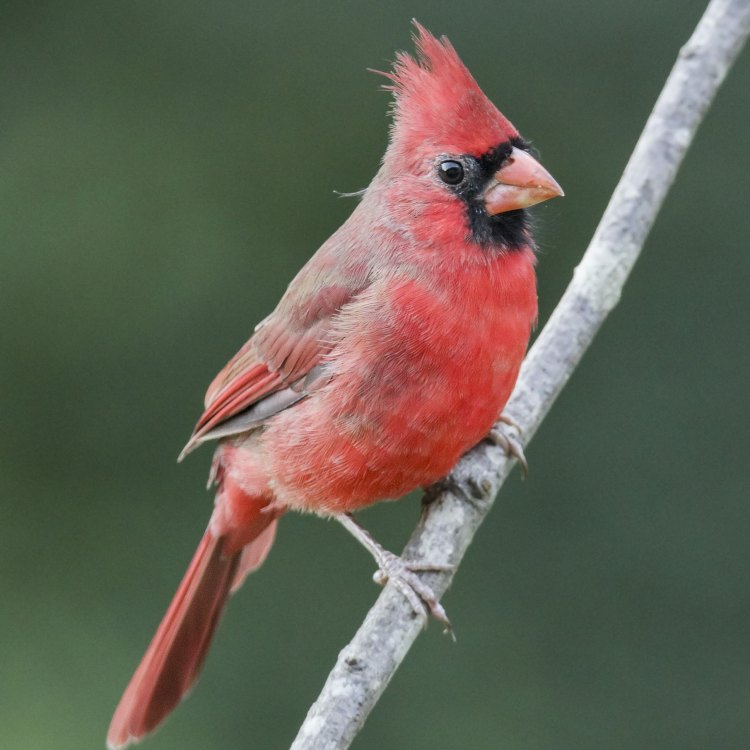
The Beautiful and Bold Northern Cardinal: A Songbird of North America
Disclaimer: The content provided is for informational purposes only. We cannot guarantee the accuracy of the information on this page 100%. All information provided here may change without prior notice.





